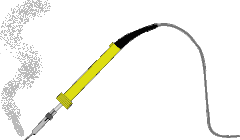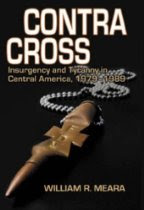Podcasting since 2005! Listen to Latest SolderSmoke
Tuesday, November 30, 2021
Putting a Barebones Superhet on 17 Meters with an NE602 Converter (Video)
Sunday, November 28, 2021
How To Understand the NE-602 and the Gilbert Cell Mixer
Saturday, November 27, 2021
The Galway Radio Experimenters Club
Wednesday, November 24, 2021
Gloria -- A Netflix Series about a Shortwave Broadcast Station in Portugal
Rarely if ever will we come across a high quality NETFLIX series built around a shortwave broadcast transmitter. But that is what we have in Gloria. It is really good. We were especially interested in it because we lived in Portugal for three years. In addition to all the intrigue and drama you will catch glimpses of broadcast antennas, big transmitting tubes, and one out-of-focus shot of what appears to be a Hallicrafters receiver (SX-42?)
More info here:
Here's the NETFLIX link:
https://www.netflix.com/title/81073977
Thanks to Thomas K4SWL of SWLing Post for the heads up.
Tuesday, November 23, 2021
Jagadish Chandra Bose
Jagadish Chandra Bose
Sunday, November 21, 2021
KG7TR's Magnificent 75S-2B Receiver -- Tubes, an Si5351, an Arduino, a Bit of Collins, and a Bit of a Drake 2-B
I was led to this magnificent receiver by the very humble 6U8 tube. Scott WA9WFA and I have been learning (mostly from Grayson KJ7UM) that the much used and sometimes loved 6U8s (three of them in our "Mates for the Mighty Midget") might be a bit long in the tooth, old even by Thermatron standards. I was worried when I remembered that my Drake 2-B has a 6U8 in it -- V2, the first mixer. So I Googled for more info and was led to this amazing receiver, a 2018 creation by KG7TR. How did we NOT see this for almost four years?
Here is more info and pictures:
http://www.kg7tr.com/75s-2b-receiver.html
Here is Mike's write-up of the project:
Mike KG7TR's web site:
As for the 6U8s, well Grayson says the tube has been getting something of a bum rap. And KG7TR has two of them in this receiver, so I will obviously have to give the 6U8 another chance.
--------------------
I didn't know that Lew McCoy had his own crystal and crystal filter company:
Saturday, November 20, 2021
The Double Crystal Lattice Filter in the Swan 240 -- Smoothing it out with a NanoVNA
Wednesday, November 17, 2021
SolderSmoke Podcast #234: PSSST, KWM-1, VHF Woes, Mighty Midget, TinySA, 17-12 Dual-Bander Advice Needed. MAILBAG
PSSST Super Simple SSB -- 7 Transistors. Switching IF Module:
DC RX.
KWM-1 Resurrection "Shame Shelf".
How to make things work:
Diode Switching or Relays?
National Receiver.
Bill's Bench
Farhan's Talk to RSGB got me thinking of VHF 2 meter AM.
2 meter Benton Harbor lunchbox madness. SuperRegens Super Strange.
I broke my Maplin AF Sig Gen in the process. Fixed it.
Playing with MMMRX again. Put in 6 kHz ceramic filter. Sounds great SSB and AM.
Swept IF with noise, TinySA, and NanoVNA. Need better noise gen.
Mod to listen with TinySA (on blog).
Thinking of 17 meter /12 meter Dual-Bander IF around 21.4, VFO around 3.41 Mhz. Thoughts?
Sweeping double half lattice filter from Swan 240. UGLY.
MAILBAG:
--- ROOTS OF MAILBAG: Radio Moscow, Havana Cuba, HCJB, others.
-- Thomas K4SWL of the SWL Post: Could have been worse! Stairbag?
-- Drew N7DA worked Wes W7ZOI in Sweepstakes. FB.
-- Peter VK2EMU The movie Frequency and the Magic of Heathkits. Good, but not that good!
-- Thomas KK6AHT! Our old friend. Minima! Now has a young son! FB
-- Chuck WA7ZZE Saw QST profile. Sympathizes with Two-er trouble.
-- Tim M0CZP. Spell corrector. Vatican Diodes. Infallible!
-- Ramakrishnan VU3RDD Working on a NORCAL and a noise cancellation arrangement.
-- Skip NC9O said I was 40 Hz off on 17. But he had a reason to KNOW!
-- Steve K9NVD Glad he's a listener.
-- Bob KY3R Novice Nostalgia. Should he use 75 watt bulb for dummy load? Yes!
-- Todd K7TFC Video about why solder smoke goes into the face.
-- Anthony VU3JVX Homebrew Antuino. I ask for help in moving freq to 450 kHz.
-- Jack NG2E Building Pete's DC RX.
-- Scott WA9WFA HBR-13 and MMMRX.
-- Stephen 2E0FXZ also got a FT-101 VFO.
-- Bob K7ZB on the air with 56 mW and a big antenna.
-- Dean AC9JQ Retired.
-- Allan WA9IRS Right to Repair update.
-- Farhan Invited us to Lamakaan ARC, Dec 11 or 12. Will be on QO100 Satellite Live!
Happy Thanksgiving to all who celebrate this holiday!
Monday, November 15, 2021
SSB History: Selling SSB in 1954
K9YA Telegraph ran (on Facebook) this ad from 1954. It provides an interesting view of where phone operations were in that year. Note that Dale was so intent on selling SSB gear that they were willing to make on-the-air schedules to demonstrate SSB superiority.
Dale claims that with SSB you could have TWO roundtable QSOs on the same frequency, with one group on USB and the other on LSB. I think this assumes really great opposite sideband rejection in the transmitters, and excellent selectivity in the receivers. That might have been a bit of a stretch. But the assumption here was that hams could use USB or LSB -- no rigid adherence to the USB/LSB convention. And the ad seems to focus on the 75 meter band which was seen as the most important phone band at that time.
Dale was selling Collins mechanical filters for 55 dollars. That is the 1954 equivalent of $566 dollars today. No wonder the phasing method was so popular. Note that they were selling Central Electronics phasing rigs right next to the ad for the Collins filters.
I like the graph showing opposite sideband rejection with the Sideband Slicer. Note that the selected sideband was referred to as the "exalted" sideband. All Hail the Single Sideband!
Saturday, November 13, 2021
"First Wireless" 1922 book by Allen Chapman with Foreword by Jack Binns (free download)
Friday, November 12, 2021
Mate for the Mighty Midget with 6 kHz Ceramic Filter
Thursday, November 11, 2021
Scott WA9WFA's Beautiful HBR-13 Receiver (3 videos)
This is Scott WA9WFA's first homebrew construction project. He did an amazing job on a very complex project: a 13 tube superhet receiver. It features plug-in coils for multi-band coverage, dual conversion with IFs at 1600 kHz and 100 kHz, and several regenerative stages. Scott's construction is top notch. He tells us that he had been working on this receiver for several years, so long in fact that some of his friends began to wonder if it really existed. Well wonder no more. Retirement has provided Scott with the time to finish this project.
Wednesday, November 10, 2021
Right to Repair Update
Allan WA9IRS sent me this article. Thanks Allan.
The French "repairability index" is an interesting concept. I wonder how modern ham radio "radios" would score. I think our homebrew rigs would max out the index.
Pete has commented on manufacturing processes that do (or don't) factor in access for repair.
One of the recent horror stories we've heard is about a certain manufacturer of mobile phones. It seems that they have designed the phones so that if you dare to replace a broken screen, the new screen won't work unless you de-solder the associated chip, then re-solder in the SAME CHIP.
Previous blog posts on this:
https://soldersmoke.blogspot.com/2010/11/knackers-of-world-unite-you-have.html
https://soldersmoke.blogspot.com/2021/03/mending-vs-ending-fight-against-planned.html
Tuesday, November 9, 2021
Zigbee Radios on the Ingenuity Mars Helicopter
In his recent interview with Eric Guth, Courtney Duncan N5BF told us that the communication between the Ingenuity helicopter on Mars and the Perseverance rover is being handled by off-the-shelf Zigbee 900 MHz transceivers.
I did some Googling and found some more details on this:
----------------------------
"Once separated from the host spacecraft (lander or rover), the Mars Helicopter can only communicate to or becommanded from Earth via radio link. This link is implemented using a COTS 802:15:4 (Zig-Bee) standard 900 MHz chipset, SiFlex 02, originally manufactured by LS Research. Two identical SiFlex parts are used, one of which is an integral part of a base station mounted on the host spacecraft, the other being included in the helicopter electronics.
These radios are mounted on identical, custom PC boards which provide mechanical support, power, heat distribution,and other necessary infrastructure. The boards on each side of the link are connected to their respective custom antennas.
The helicopter antenna is a loaded quarter wave monopole positioned near the center of the solar panel (which also serves as ground plane) at the top of the entire helicopter assembly and is fed through a miniature coaxial cable routed through the mast to the electronics below. The radio is configured and exchanges data with the helicopter and base station system computers via UART.
One challenge in using off-the-shelf assemblies for electronics systems to be used on Mars is the low temperatures expected on the surface. At night, the antenna and cable assemblies will see temperatures as low as -140 C. Electronics assemblies on both base station and helicopter will be kept “warm” (not below -15 C) by heaters as required. Another challenge is antenna placement and accommodation on the larger host spacecraft. Each radio emits approximately 0.75 W power at 900 MHz with the board consuming up to 3 W supply power when transmitting and approximately 0.15 W while receiving. The link is designed to relay data at over-the-air rates of 20 kbps or 250 kbps over distances of
up to 1000 m.
A one-way data transmission mode is used to recover data from the helicopter in real time during its brief sorties.When landed, a secure two-way mode is used. Due to protocol overhead and channel management, a maximum return throughput in flight of 200 kbps is expected while two-way throughputs as low as 10 kbps are supported if required by marginal, landed circumstances."
A citation for the above quoted text: https://trs.jpl.nasa.gov/bitstream/handle/2...L%2317-6243.pdf I believe.
A more detailed reference for the telecom system with some good detail about the helicopter in general is https://trs.jpl.nasa.gov/bitstream/handle/2...L%2318-3381.pdf
Monday, November 8, 2021
Did You Contact My Novice Station WN2QHL in 1973-1974? Please Check My List and Let Me Know
Yesterday I went through my novice logs from 1973-1974. I was in Congers, NY and my call was WN2QHL. Please take a look at the callsigns from my log and let me know if we had a contact. I will then let you have more details from my log.
Novice Contacts 1973-1974 from WN2QHL
WN2NEC
WN2RTH
WA4DCL
WN4CBB
WN9LLX
WN1RWX
WN4ETR
WB2CSO
WN8QHM
WN8ONA
WN4KID
WN8PMF
WN2INN
WN2ECU
WN4DSO
WN3UCL
WN4KBL
WB4WDQ
WN0IHH
WN9MNW
WN8ODW
WA8VCH
VE1BAD
WN8NIJ
WN8MYJ
WA3TKP
WN2GMQ
WN8LDI
WN5JZP
WN5JXZ
WN2PNQ
WN2HKY
WB2PPP
WN4EIS
WN4DNV
WA8WIK
WN3TPJ
WN1RRR WN1RPR?
W2MJR
WN2SHL
WN3TZR
W1DUQ
WN2ROW
WN2SLA
WA3HNZ
WN2JXT
W2HAG
WA2CDE
WN8ORL
WN4FYL
WN1PXM
WN2FPQ
WN4ZFF/3
WN3VDU
WN8QPJ/8
WN3TBW
WN4BWT/4 OR BWJ
W9MZO/9
WN1SLG
WN0KTR
W9KCT
WN3VKH
K1BXZ
W1AW
WA2QNX
K2BBU
K1BXZ
WN2ROZ
W1TRS
VE3FMF
WN3UPO
K1OOL
WN2RNJ
WN2KWK
WA2CDE
WN2JDE
WN3UQO
WN2IZY
W3CNN
WN2NNA
WB2EVS
VE2AJQ
WN1SBE
WN4ZIN
WA2JXM
WA3TVE/3 OR JVE
OR UE
WASQWF
WA3JRU
W3ABT
WA2IWX
WN3FLK
WN1RZW
WN3TBW
WB2PYM
WN1RXM
WN2ERU
WB8HHN
WN2LVV
WB8JBM/8
WN2TEO
K4LDR
WN2EHE
K8MFO
WN2NAE
W3IN
WN3SZX
WA1EOT
W2MUM
WA2UOO
WB2RKK
W4KFL
WN2NEC
WN4EJJ
WN1SCL
WN2NQL
WA1RXJ
WA2YAS
WN2QHN
WN8POK
WB2ABJ
WN1QKD
WN2SDO
WN1SRT
WN2KOH
WN8DOB
WN1SQM
WN2SXT
W2HN
WA1RFF
WN2VNA
WN1RME
WB4YNY
WB8ALE
WN4AQM
WN4DMO
WN3USU
WN8NXE
W2HAG
WA1KLB
WB2NDL
WN2JXG
WN1RIP
WN2LKN
WA3IYA
WB9LJS
WN2RPL
K1BOM
WN4GOC
WN8QGO
WN8OPB
WN8OOE
WN2SAM
WN4FXN
WB2SXD/2
WN2IQM
WN3VUU OR UUU?
WN8PGD
WN8PIU
WN8OGY
WN8OWD
WN8OHP
WN9JOI
WN2GMQ
WN3VUR UR UUR
WN2LOC
WN2SAM
WN2TJQ
WA43PM
WA4YDR
WN9LDS OR LOS
WN9LSR
WN3UDR
WN1RGU
WA1RYL
WN2LBO
WN1RIM
WN2TAG
WN2TLQ
WN8ODP
WN2TBB OR JBB
WN4CRZ First QSO with DX-100
WN4HKG
WA6TLH/HK6 FIRST DX 40 METERS
Feb 23 1974
WN2JHP
WN2TAS OR JAS
WN8QXR
W4DRJ
WN4GBX
WN4DAQ
WB8KUQ
WN4BPN
WN2SAM
WN8OVW
VE3GXX
WN0JOZ
WN6CPQ
WA4CNL
WN0LLT
WN0KUU OR KVU OR
KUV
WN8QIN
WN4HLQ
K0IEU
WA1DWL
WN4GUF
VE1IC
WN4FOM
K2AVX
WA9AKY
VE2DJB
WN4EDQ
WN8PLH
WN2TPD
WN1SZS
WN4HRC
WA0WTV
VE3HEF
WN3UOO
K2IY
W4AHN
WN8OIF
WN9NYO
VE3AFX
K1PNB
K5EQX
WB6ALD
WB6LUS
WN0LQE
WA1POJ
WA5RFT
WN8NYU OR V
WN4GUF
K1BXZ
WN5GTE
WB5GDN
WB5GEN
WN2TJQ
WN2JXT
WN4CQX
WA1ASU/1
WN2IOJ
WN4GMY
WN2RUZ
WB8PRJ
WN4BTL
WB8MOI
VE3AGY
W8JEI
WN3VUZ
WA2CME
WN5KYK
WA1JUY
WN2NIL
K3DHD/9
WN4CTJ OR CWJ OR
WUJ OR CVJ Gadsden AL.
WP4DRE/5
WN2GMQ
WN1SIP
WN9MOS
WN9OCO
WN2UAC
WN8NPY
WB5DIZ
WN2JHD
WN2RYH
WN2RXL
WB8OFU
WN8RTU
WN8MTW
WN8PIY
WA8JPC
K1OOL
WB2MYV
WN4CNE
WN4DXW
WN2PHE
WN8MYJ
WM2TTQ
WN4AYX
WN4ECB
WNOJGT
W4UHF
WN4FPU
WN8QCV OR U
WN8PCV
WN2STZ
WN2KLX
WN2FUN
WN2SLF
WN8RTZ/9
WN9MLY
WA7SCG
KP4USN
WN2UMV
WA6ARG
WA4BPS
WN9MAO
WN5HRI OR 4
WN2PWM
KZ5VV
ZL2ACP
WA6UUR OR VVR JACK
IN Pasadena
KN5KSX
YU1NFT
YU2QZE
WA7STW
WN8RIK/4
WN2UMU
WN2PNQ
WN2QCE
YU2QZ
WN2TJQ















































